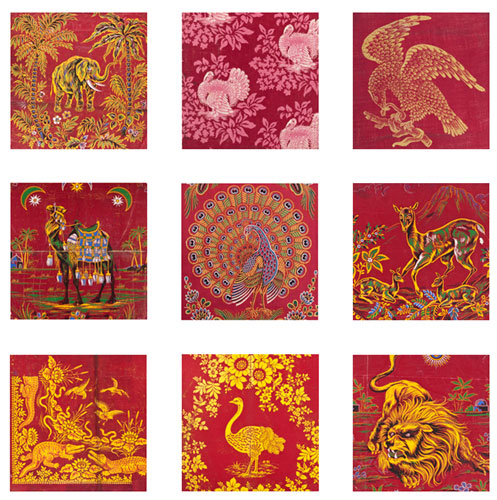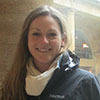The last Scottish Turkey factory closed within living memory, so we knew there would be an interest in rediscovering the importance of the cotton printing and dyeing industry that once dominated the Vale of Leven. But since Colouring the Nation started in 2011 we have been overwhelmed by the positive response we have received.

Last year on the Feast Bowl, Graeme Yule showed some of the images we had taken of the Turkey Red Collection so far – and more of these are now available in the online exhibition. Digitising part of the Turkey Red Collection was a huge part of the project (we wish we could have done it all but with an estimated 40,000 textile samples there simply wasn’t the time!). However, another significant element has been meeting all the different people who have an interest in the industry – whether from a design perspective, from knowledge gathered working with textiles or from an interest in local history. We held a number of workshops, each with a different focus and each shedding new light (for us at least) on the Scottish Turkey red industry.
In November 2012 we met with a group of quilters from the Quilters Guild of the British Isles and it quickly became clear to us how important quilting is to the survival of Turkey red dyed and printed cottons. Quilts in America and Britain were often made with Turkey red printed cotton as it was a bright, durable fabric and lent itself well to the colourful designs. Surviving quilts are perhaps the largest body of evidence showing us how Turkey red cottons were actually used.
We have also enjoyed investigating the world of quilted garments – sadly, given the current climate, a trend which is not as popular as it was in the nineteenth century! This quilted petticoat, for instance, has survived in excellent condition. It was made by McLintock and Sons in the late nineteenth century and although we cannot say for certain the fabric was dyed and printed in Scotland, the pattern is very similar to those in the Turkey Red Collection.


In December 2012 we held a ‘show and tell’ workshop in the Vale of Leven, hoping to create an atmosphere of The Antiques Roadshow meets Who Do You Think You Are? The response was incredible. Not only did more quilts come to light, but we were also shown some of the tools used by the hand block printers at the turn of the century, as well as pieces of machinery which had been recovered from the River Leven since the industry and factories had closed.
A particular highlight was meeting with people who had worked in the factories before they closed in the early ’60s. We met Annie Hussey, née Lacey, who started working at the Craft in the 1920s, and James Howard and Hugh Toole who worked for the UTR after the Second World War, all of whom were willing to share their stories.

Most recently we held a workshop at the Edinburgh Science Festival. Richard Ashworth of the Society of Dyers and Colourists in Bradford gave us an insight into the history of natural dyes and then we had the opportunity to do some natural dyeing of our own with turmeric, helping to put into perspective just how much effort would have been required to produce natural dyes on a large scale.


Thanks to everyone who has participated in our various workshops, who has given us tips on sources to follow up, or has shared their experiences and knowledge of the Turkey red industry. We have thoroughly enjoyed this project and hope that others out there are inspired to find out more!
More information about the project and some its results can be found at www.colouringthenation.wordpress.com. You can see the online exhibition now.
Colouring the Nation is directed by Dr. Stana Nenadic of the University of Edinburgh and is funded by the Royal Society of Edinburgh and the Scottish Government under their Major Research Grants in the Arts and Humanities scheme. The project researches the Turkey red dyeing and printing industry in the west of Scotland in the nineteenth century.
